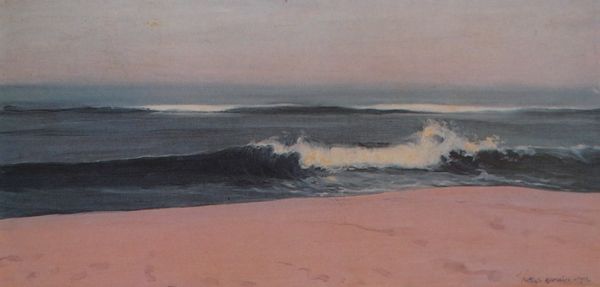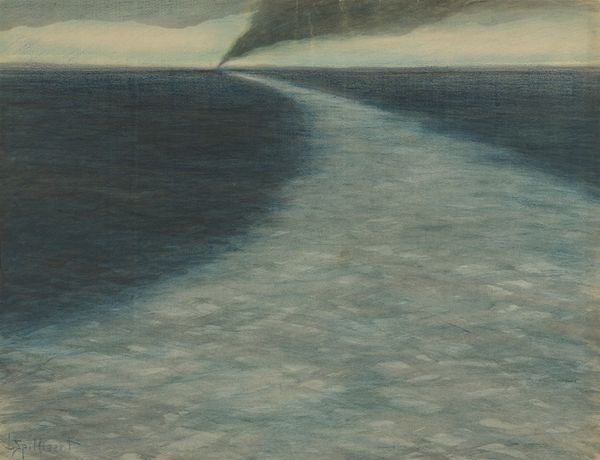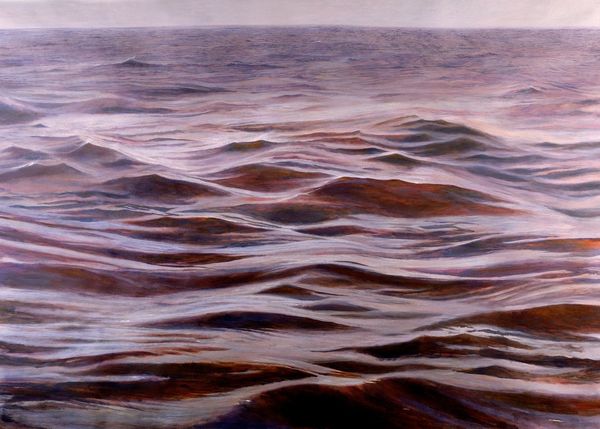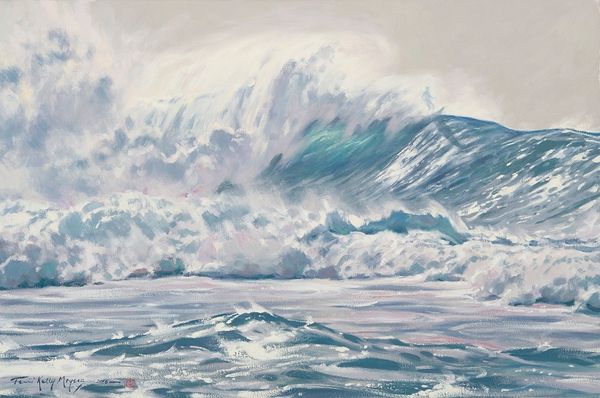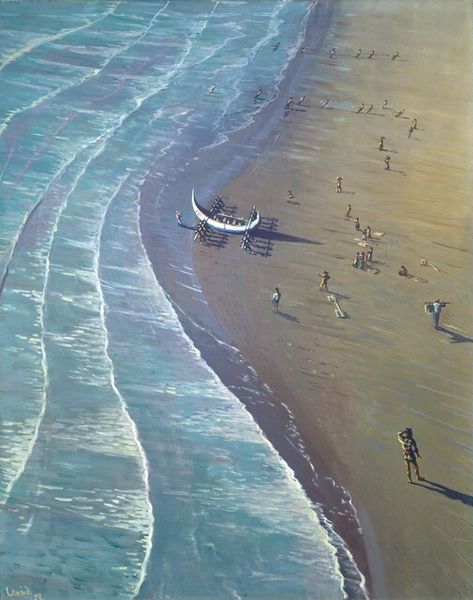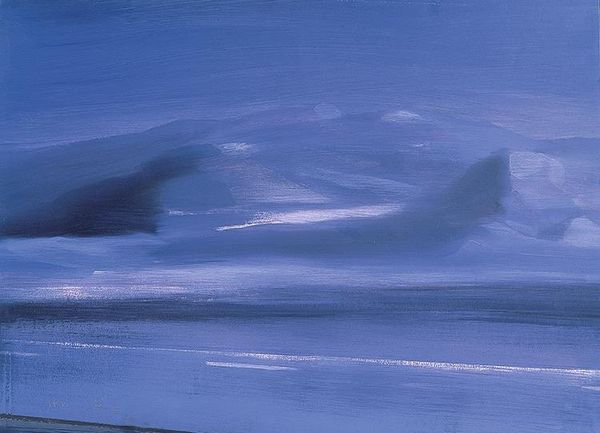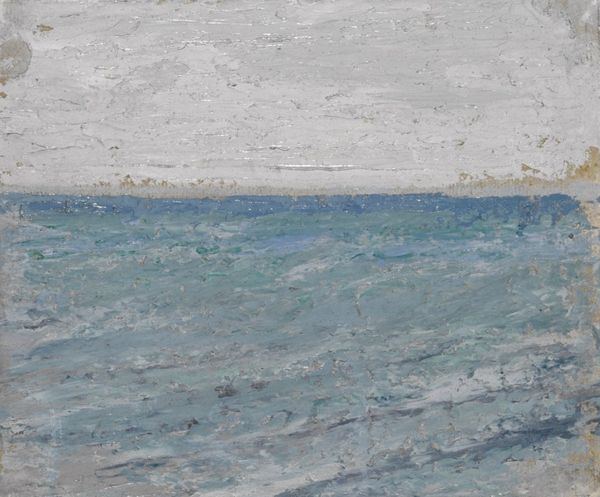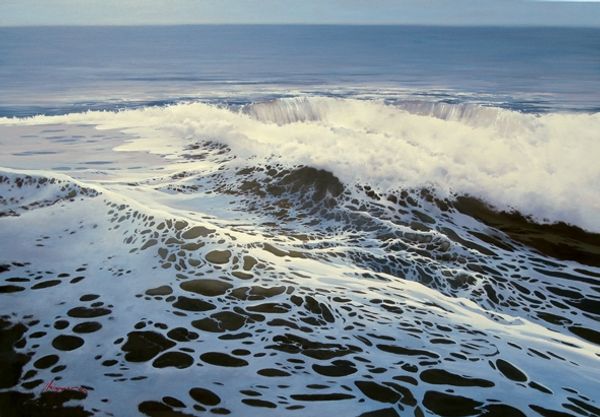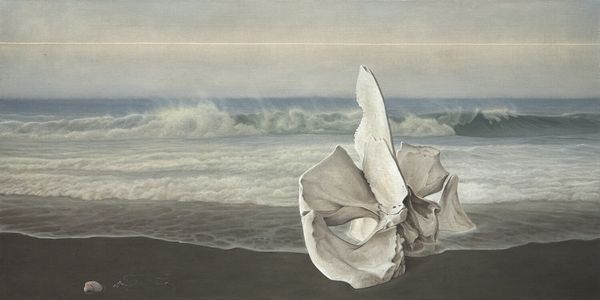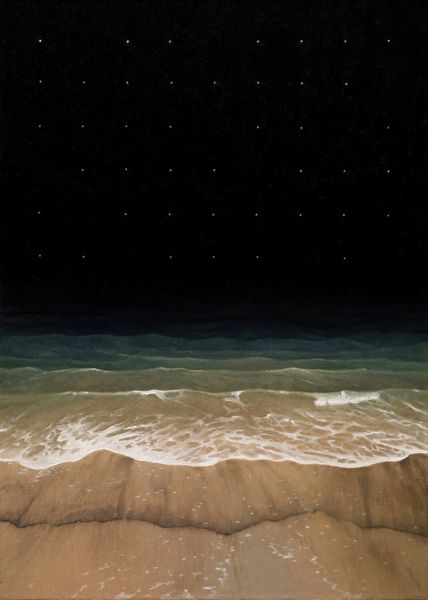
Copyright: A.C.Fine Art Inc.
Curator: Let's discuss Alex Colville's "Swimmer" from 1962, an oil on board painting depicting a solitary figure in a vast expanse of water. What strikes you initially about it? Editor: It feels stark. There's this tension between the almost monotonous regularity of the waves and the solitary figure cutting through them. The heavy impasto of the oil seems to absorb all light; even the sky feels dense and oppressive. It speaks of labour somehow, this determined movement against the material weight of the water. Curator: That feeling of weight is fascinating. Colville often used precise geometric compositions, even mathematical ratios, and these contributed to an overall sense of order and, perhaps, fate. Consider the symbolic implications: the swimmer, a figure of endurance, moving through a sea that could represent life itself. The cap is particularly striking, almost halo-like, isolating and elevating him simultaneously. Editor: That 'halo' also reminds me of the industrial process, though. It could be molded plastic or synthetic rubber. Consider what it is MADE of. How that impacts his movement, or allows him to perform this solitary task at all. Are there life preservers beneath his skin? Are these merely material conditions that are necessary for him to perform his personal spiritual ritual? Curator: Interesting. It raises the question of artifice versus nature, something so crucial to that decade. And, as the Romantic movement always wrestled, perhaps it's humanity striving for connection with the immensity of the natural world. Do you see any trace of anxiety in the depiction? Editor: Yes, definitely. The careful rendering of the surface, and then his smooth sleek skull. It isn’t a triumphant painting, and is even somewhat sterile. I think of the work involved in making something appear "real"—the oil is carefully labored over. Are those small waves in the distance real, or just laboring along the surface? Curator: The ambiguity of it all is key. Ultimately, it's a poignant reflection on the human condition, presented through the lens of both realism and symbolism. Editor: And the complex interplay between production, form, and function, reminding us that art and life are, inescapably, material processes.
Comments
No comments
Be the first to comment and join the conversation on the ultimate creative platform.
